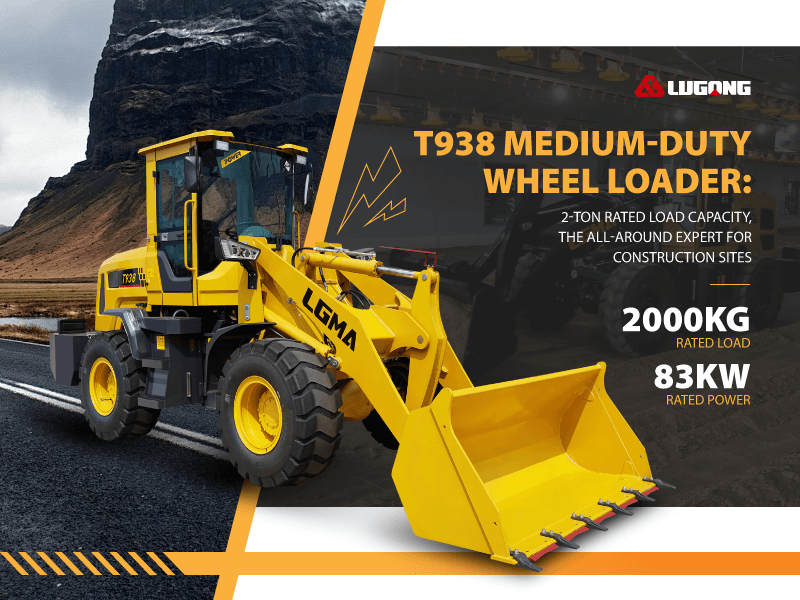What is the Compact Wheel Loaders’ Bucket Capacity?
Compact Wheel Loaders’ Bucket Capacity Introduction:
Compact wheel loaders are versatile machines used in various industries for material handling and loading tasks. One crucial aspect of compact wheel loaders is their bucket capacity, which determines the amount of material they can handle at a time. This article aims to provide valuable insights into the bucket capacity of compact wheel loaders. Including LUGONG compact wheel loader each type of bucket capacity and other product parameters display.

Understanding Compact Wheel Loaders:
Compact wheel loaders are robust machines designed for maneuverability and efficiency in tight spaces. They are widely used in construction, agriculture, landscaping, and other industries. These loaders offer exceptional performance and versatility, making them indispensable equipment in many operations.
Compact Wheel Loaders Bucket Capacity:
The bucket capacity of a compact wheel loader refers to the volume of material it can hold. It is an essential factor to consider when selecting the right loader for a specific task. The bucket capacity is typically measured in cubic yards or cubic meters, indicating the maximum volume the bucket can accommodate.
LUGONG Compact Wheel Loader Model |
Bucket Capacity |
Rated Load |
T916 |
0.4 m³ |
0.6 TON |
T920 |
0.6 m³ |
1.2 TON |
T928 |
0.6 m³ |
1.6 TON |
T930 |
0.8 m³ |
1.6 TON |
T936 |
1.0 m³ |
1.8 TON |
T938 |
1.0 m³ |
2.0 TON |
LG930 |
0.8 m³ |
1.8 TON |
LG938 |
1.0 m³ |
2.0 TON |
LG939 |
1.2 m³ |
2.2 TON |
LG940 |
1.3 m³ |
2.5 TON |
LG946 |
1.5 m³ |
2.8 TON |
Factors Affecting Compact Wheel Loaders Bucket Capacity:
Several factors influence the bucket capacity of compact wheel loaders. These include the size and design of the loader, hydraulic system capabilities, and the type of material being handled. It is crucial to assess these factors to ensure the loader’s bucket capacity aligns with the desired application requirements.
Optimal Compact Wheel Loaders Bucket Capacity Selection:
Selecting the appropriate bucket capacity for a compact wheel loader depends on the intended use and the nature of the materials being handled. A larger bucket capacity allows for more efficient loading and reduces the number of cycles required. However, it is essential to strike a balance between bucket capacity and the loader’s overall performance to ensure optimal productivity.
Compact Wheel Loaders Target Markets and Audiences:
This article aims to reach markets and audiences outside of Europe and North America, focusing on regions where compact wheel loaders are gaining popularity. These markets may include Asia, Africa, and South America, where construction and infrastructure development are rapidly growing. The article targets construction companies, contractors, agricultural enterprises, and other industries that require efficient material handling solutions.
What is the Compact Wheel Loaders’ Bucket Capacity–Conclusion:
The compact wheel loaders’ bucket capacity plays a vital role in determining their efficiency and productivity. Understanding this key aspect allows businesses and operators to make informed decisions when selecting the right loader for their specific needs. By considering factors such as size, design, and material type, one can optimize the loader’s performance and achieve maximum productivity. Compact wheel loaders offer a range of benefits beyond their bucket capacity, making them valuable assets in various industries worldwide.


